-
EXECUTIVE SUMMARY
-
Market Attractiveness Analysis
- Global Stainless-Steel IBC Market, by Capacity
- Global Stainless-Steel IBC Market, by End-user
- Global Stainless-Steel IBC Market, by region.
-
MARKET INTRODUCTION
-
Definition
-
Scope of the Study
-
Market Structure
-
Key Buying Criteria
-
Macro Factor Analysis
-
RESEARCH METHODOLOGY
-
Research Process
-
Primary Research
-
Secondary Research
-
Market Size Estimation
-
Forecast Model
-
List of Assumptions
-
MARKET DYNAMICS
-
Introduction
-
Drivers
- Increasing demand for safe and reliable storage and transportation of liquids
- Rising trade activity and increased manufacturing production
- Drivers impact analysis
-
Restraints
- Higher initial CAPEX expenditure and not economical for site-to-site transfer, particularly for short distances
-
Opportunities
- Safer Sustainable Packaging and Mounting Popularity in the Petrochemical Sector
- Growth of the food and agriculture services industry
-
Covid 19 Impact Analysis
- Impact on Global Stainless-Steel IBC market
- Impact on Supply Chain of global Stainless-Steel IBC
- Impact on Market Demand
- Impact on Pricing of global Stainless-Steel IBC.
-
MARKET FACTOR ANALYSIS
-
Value Chain Analysis/Supply Chain Analysis
- Raw material supply
- Manufacture & Assembly
- Supply & distribution
- End user
- After sale services
-
Porter’s Five Forces Model
- Bargaining Power of Suppliers
- Bargaining Power of Buyers
- Threat of New Entrants
- Threat of Substitutes
- Intensity of Rivalry
-
Regulatory Framework
-
GLOBAL STAINLESS-STEEL IBC MARKET ESTIMATES & FORECAST, BY CAPACITY
-
Introduction
-
Up to 1,000 Liters
-
1,001 to 1,500 Liters
-
1,501 to 2,000 Liters
-
Above 2,000 Liters
-
GLOBAL STAINLESS-STEEL IBC MARKET ESTIMATES & FORECAST, BY END-USER
-
Introduction
-
Industrial Chemicals
-
Petroleum & Lubricants
-
Food & Beverages
-
Construction
-
Pharmaceutical
-
Others
-
GLOBAL STAINLESS-STEEL IBC MARKET ESTIMATES & FORECAST, BY REGION
-
Introduction
-
North America
- North America Global Stainless-Steel IBC by Capacity (USD Million, 2018 -2032)
- North America Global Stainless-Steel IBC by End-User (USD Million, 2018 -2032)
- US
- Canada
- Mexico
-
Europe
- Europe Global Stainless-Steel IBC by Capacity (USD Million, 2018 -2032)
- Europe Global Stainless-Steel IBC by End-User (USD Million, 2018 -2032)
- Germany
- France
- UK
- Italy
- Spain
- Rest of Europe
-
Asia-Pacific
- Asia-Pacific Global Stainless-Steel IBC by Capacity (USD Million, 2018 -2032)
- Asia-Pacific Global Stainless-Steel IBC by End-User (USD Million, 2018 -2032)
- China
- India
- Japan
- Australia
- Southeast Asia
- Rest of Asia-Pacific
-
Middle East and Africa
- Middle East and Africa Global Stainless-Steel IBC by Capacity (USD Million, 2018 -2032)
- Middle East and Africa Global Stainless-Steel IBC by End-User (USD Million, 2018 -2032)
- Saudi Arabia
- South Africa
- UAE
- Egypt
- Rest of MEA
-
South America
- South America Global Stainless-Steel IBC by Capacity (USD Million, 2018 -2032)
- South America Global Stainless-Steel IBC by End-User (USD Million, 2018 -2032)
- Brazil
- Argentina
- Rest of South America
-
COMPETITIVE LANDSCAPE
-
Introduction
-
Key Players Market Share Analysis, 2022 (%)
-
Competitive Benchmarking
-
Competitor Dashboard
-
Major Growth Strategy in the Market
-
Key Developments & Growth Strategies
- New Product Development
- Mergers & Acquisitions
- Contracts & Agreements
- Expansions & Investments
-
COMPANY PROFILES
-
Thielmann US LLC
- Company Overview
- Financial Overview
- Products Offered
- Key Developments
- SWOT Analysis
- Key Strategies
-
Precision IBC
- Company Overview
- Financial Overview
- Products Offered
- Key Developments
- SWOT Analysis
- Key Strategies
-
Automationstechnik GmbH
- Company Overview
- Financial Overview
- Products Offered
- Key Developments
- SWOT Analysis
- Key Strategies
-
Sharpsville Container Corporation
- Company Overview
- Financial Overview
- Products Offered
- Key Developments
- SWOT Analysis
- Key Strategies
-
Hoover Ferguson Group
- Company Overview
- Financial Overview
- Products Offered
- Key Developments
- SWOT Analysis
- Key Strategies
-
Snyder Industries Inc.
- Company Overview
- Financial Overview
- Products Offered
- Key Developments
- SWOT Analysis
- Key Strategies
-
SCHÄFER Werke GmbH
- Company Overview
- Financial Overview
- Products Offered
- Key Developments
- SWOT Analysis
- Key Strategies
-
Custom Metalcraft Inc
- Company Overview
- Financial Overview
- Products Offered
- Key Developments
- SWOT Analysis
- Key Strategies
-
Metano Ibc Services Inc.
- Company Overview
- Financial Overview
- Products Offered
- Key Developments
- SWOT Analysis
- Key Strategies
-
Matcon Ltd
- Company Overview
- Financial Overview
- Products Offered
- Key Developments
- SWOT Analysis
- Key Strategies
-
LIST OF TABLES
-
PRIMARY INTERVIEWS
-
LIST OF ASSUMPTIONS & LIMITATIONS
-
GLOBAL STAINLESS STEEL IBC MARKET ESTIMATES & FORECAST, TYPE, 2025-2034 (USD MILLION)
-
UP TO 1,000 LTRS: MARKET ESTIMATES & FORECAST, BY REGION, 2025-2034 (USD MILLION)
-
1,001 TO 1,500 LITERS: MARKET ESTIMATES & FORECAST, BY REGION, 2025-2034 (USD MILLION)
-
1,501 TO 2,000 LTRS: MARKET ESTIMATES & FORECAST, BY REGION, 2025-2034 (USD MILLION)
-
ABOVE 2,000 LTRS: MARKET ESTIMATES & FORECAST, BY REGION, 2025-2034 (USD MILLION)
-
GLOBAL STAINLESS STEEL IBC MARKET ESTIMATES & FORECAST, BY END USER, 2025-2034 (USD MILLION)
-
INDUSTRIAL CHEMICALS: MARKET ESTIMATES & FORECAST, BY REGION, 2025-2034 (USD MILLION)
-
PETROLEUM & LUBRICANTS: MARKET ESTIMATES & FORECAST, BY REGION, 2025-2034 (USD MILLION)
-
FOOD & BEVERAGES: MARKET ESTIMATES & FORECAST, BY REGION, 2025-2034 (USD MILLION)
-
CONSTRUCTION: MARKET ESTIMATES & FORECAST, BY REGION, 2025-2034 (USD MILLION)
-
PHARMACEUTICAL: MARKET ESTIMATES & FORECAST, BY REGION, 2025-2034 (USD MILLION)
-
OTHERS: MARKET ESTIMATES & FORECAST, BY REGION, 2025-2034 (USD MILLION)
-
GLOBAL STAINLESS STEEL IBC MARKET ESTIMATES & FORECAST, BY REGION, 2025-2034 (USD MILLION)
-
NORTH AMERICA: MARKET ESTIMATES & FORECAST, BY COUNTRY, 2025-2034 (USD MILLION)
-
NORTH AMERICA: STAINLESS STEEL IBC MARKET, CAPACITY, 2025-2034 (USD MILLION)
-
NORTH AMERICA: STAINLESS STEEL IBC MARKET, BY END USER, 2025-2034 (USD MILLION)
-
US: STAINLESS STEEL IBC MARKET, CAPACITY, 2025-2034 (USD MILLION)
-
US: STAINLESS STEEL IBC MARKET, BY END USER, 2025-2034 (USD MILLION)
-
CANADA: STAINLESS STEEL IBC MARKET, CAPACITY, 2025-2034 (USD MILLION)
-
CANADA: STAINLESS STEEL IBC MARKET, BY END USER, 2025-2034 (USD MILLION)
-
MEXICO: STAINLESS STEEL IBC MARKET, CAPACITY, 2025-2034 (USD MILLION)
-
MEXICO: STAINLESS STEEL IBC MARKET, BY END USER, 2025-2034 (USD MILLION)
-
EUROPE: MARKET ESTIMATES & FORECAST, BY COUNTRY, 2025-2034 (USD MILLION)
-
EUROPE: STAINLESS STEEL IBC MARKET, CAPACITY, 2025-2034 (USD MILLION)
-
EUROPE: STAINLESS STEEL IBC MARKET, BY END USER, 2025-2034 (USD MILLION)
-
GERMANY: STAINLESS STEEL IBC MARKET, CAPACITY, 2025-2034 (USD MILLION)
-
GERMANY: STAINLESS STEEL IBC MARKET, BY END USER, 2025-2034 (USD MILLION)
-
FRANCE: STAINLESS STEEL IBC MARKET, CAPACITY, 2025-2034 (USD MILLION)
-
FRANCE: STAINLESS STEEL IBC MARKET, BY END USER, 2025-2034 (USD MILLION)
-
ITALY: STAINLESS STEEL IBC MARKET, CAPACITY, 2025-2034 (USD MILLION)
-
ITALY: STAINLESS STEEL IBC MARKET, BY END USER, 2025-2034 (USD MILLION)
-
UK: STAINLESS STEEL IBC MARKET, CAPACITY, 2025-2034 (USD MILLION)
-
UK: STAINLESS STEEL IBC MARKET, BY END USER, 2025-2034 (USD MILLION)
-
SPAIN: STAINLESS STEEL IBC MARKET, CAPACITY, 2025-2034 (USD MILLION)
-
SPAIN: STAINLESS STEEL IBC MARKET, BY END USER, 2025-2034 (USD MILLION)
-
REST OF EUROPE: STAINLESS STEEL IBC MARKET, CAPACITY, 2025-2034 (USD MILLION)
-
REST OF EUROPE: STAINLESS STEEL IBC MARKET, BY END USER, 2025-2034 (USD MILLION)
-
ASIA-PACIFIC: MARKET ESTIMATES & FORECAST, BY COUNTRY, 2025-2034 (USD MILLION)
-
ASIA PACIFIC: STAINLESS STEEL IBC MARKET, CAPACITY, 2025-2034 (USD MILLION)
-
ASIA PACIFIC: STAINLESS STEEL IBC MARKET, BY END USER, 2025-2034 (USD MILLION)
-
CHINA: STAINLESS STEEL IBC MARKET, CAPACITY, 2025-2034 (USD MILLION)
-
CHINA: STAINLESS STEEL IBC MARKET, BY END USER, 2025-2034 (USD MILLION)
-
JAPAN: STAINLESS STEEL IBC MARKET, CAPACITY, 2025-2034 (USD MILLION)
-
JAPAN: STAINLESS STEEL IBC MARKET, BY END USER, 2025-2034 (USD MILLION)
-
INDIA: STAINLESS STEEL IBC MARKET, CAPACITY, 2025-2034 (USD MILLION)
-
INDIA: STAINLESS STEEL IBC MARKET, BY END USER, 2025-2034 (USD MILLION)
-
AUSTRALIA: STAINLESS STEEL IBC MARKET, CAPACITY, 2025-2034 (USD MILLION)
-
AUSTRALIA: STAINLESS STEEL IBC MARKET, BY END USER, 2025-2034 (USD MILLION)
-
SOUTHEAST ASIA: STAINLESS STEEL IBC MARKET, CAPACITY, 2025-2034 (USD MILLION)
-
SOUTH KOREA: STAINLESS STEEL IBC MARKET, BY END USER, 2025-2034 (USD MILLION)
-
REST OF ASIA PACIFIC: STAINLESS STEEL IBC MARKET, CAPACITY, 2025-2034 (USD MILLION)
-
REST OF ASIA PACIFIC: STAINLESS STEEL IBC MARKET, BY END USER, 2025-2034 (USD MILLION)
-
SOUTH AMERICA: MARKET ESTIMATES & FORECAST, BY COUNTRY, 2025-2034 (USD MILLION)
-
SOUTH AMERICA: STAINLESS STEEL IBC MARKET, CAPACITY, 2025-2034 (USD MILLION)
-
SOUTH AMERICA: STAINLESS STEEL IBC MARKET, BY END USER, 2025-2034 (USD MILLION)
-
BRAZIL: STAINLESS STEEL IBC MARKET, CAPACITY, 2025-2034 (USD MILLION)
-
BRAZIL: STAINLESS STEEL IBC MARKET, BY END USER, 2025-2034 (USD MILLION)
-
ARGENTINA: STAINLESS STEEL IBC MARKET, CAPACITY, 2025-2034 (USD MILLION)
-
ARGENTINA: STAINLESS STEEL IBC MARKET, BY END USER, 2025-2034 (USD MILLION)
-
REST OF SOUTH AMERICA: STAINLESS STEEL IBC MARKET, CAPACITY, 2025-2034 (USD MILLION)
-
REST OF SOUTH AMERICA: STAINLESS STEEL IBC MARKET, BY END USER, 2025-2034 (USD MILLION)
-
MIDDLE EAST & AFRICA: MARKET ESTIMATES & FORECAST, BY COUNTRY, 2025-2034 (USD MILLION)
-
MIDDLE EAST & AFRICA: STAINLESS STEEL IBC MARKET, CAPACITY, 2025-2034 (USD MILLION)
-
MIDDLE EAST & AFRICA: STAINLESS STEEL IBC MARKET, BY END USER, 2025-2034 (USD MILLION)
-
SAUDI ARABIA: STAINLESS STEEL IBC MARKET, CAPACITY, 2025-2034 (USD MILLION)
-
SAUDI ARABIA: STAINLESS STEEL IBC MARKET, BY END USER, 2025-2034 (USD MILLION)
-
UAE: STAINLESS STEEL IBC MARKET, CAPACITY, 2025-2034 (USD MILLION)
-
UAE: STAINLESS STEEL IBC MARKET, BY END USER, 2025-2034 (USD MILLION)
-
SOUTH AFRICA: STAINLESS STEEL IBC MARKET, CAPACITY, 2025-2034 (USD MILLION)
-
SOUTH AFRICA: STAINLESS STEEL IBC MARKET, BY END USER, 2025-2034 (USD MILLION)
-
EGYPT: STAINLESS STEEL IBC MARKET, CAPACITY, 2025-2034 (USD MILLION)
-
EGYPT: STAINLESS STEEL IBC MARKET, BY END USER, 2025-2034 (USD MILLION)
-
REST OF MIDDLE EAST & AFRICA: STAINLESS STEEL IBC MARKET, CAPACITY, 2025-2034 (USD MILLION)
-
REST OF MIDDLE EAST & AFRICA: STAINLESS STEEL IBC MARKET, BY END USER, 2025-2034 (USD MILLION)
-
THIELMANN US LLC.: PRODUCTS OFFERED
-
PRECISION IBC, INC: PRODUCTS OFFERED
-
AUTOMATIONSTECHNIK GMBH: PRODUCTS OFFERED
-
SHARPSVILLE CONTAINER CORPORATION: PRODUCTS OFFERED
-
HOOVER FERGUSON GROUP: PRODUCTS OFFERED
-
SNYDER INDUSTRIES INC.: PRODUCTS OFFERED
-
SCHÄFER WERKE GMBH: PRODUCTS OFFERED
-
CUSTOM METALCRAFT: PRODUCTS OFFERED
-
METANO IBC: PRODUCTS OFFERED
-
List Of Figures
-
MARKET SYNOPSIS
-
GLOBAL STAINLESS STEEL IBC MARKET ANALYSIS, CAPACITY, 2022 AND MARKET VALUE FROM 2018-2032
-
GLOBAL STAINLESS STEEL IBC MARKET ANALYSIS, BY END USER, 2022 AND MARKET VALUE FROM 2018-2032
-
GLOBAL STAINLESS STEEL IBC MARKET ANALYSIS, BY REGION, 2022
-
GLOBAL STAINLESS STEEL IBC MARKET: STRUCTURE
-
RESEARCH PROCESS
-
TOP-DOWN & BOTTOM-UP APPROACHES
-
MARKET DYNAMICS OVERVIEW
-
DRIVERS IMPACT ANALYSIS: GLOBAL STAINLESS STEEL IBC MARKET
-
RESTRAINT IMPACT ANALYSIS: GLOBAL MINING CHEMICALS MARKET
-
GLOBAL STAINLESS STEEL IBC MARKET: SUPPLY / VALUE CHAIN
-
GLOBAL STAINLESS STEEL IBC MARKET, CAPACITY, 2022 (% SHARE)
-
GLOBAL STAINLESS STEEL IBC MARKET, CAPACITY, 2025-2034 (USD MILLION)
-
GLOBAL STAINLESS STEEL IBC MARKET, BY END USER, 2022 (% SHARE)
-
GLOBAL STAINLESS STEEL IBC MARKET, BY END USER, 2025-2034 (USD MILLION)
-
GLOBAL STAINLESS STEEL IBC MARKET, BY REGION, 2025-2034 (USD MILLION)
-
GLOBAL STAINLESS STEEL IBC MARKET, BY REGION, 2022 (% SHARE)
-
NORTH AMERICA: STAINLESS STEEL IBC MARKET SHARE, BY COUNTRY, 2022 (% SHARE)
-
EUROPE: STAINLESS STEEL IBC MARKET SHARE, BY COUNTRY, 2022 (% SHARE)
-
ASIA-PACIFIC: STAINLESS STEEL IBC MARKET SHARE, BY COUNTRY, 2022 (% SHARE)
-
SOUTH AMERICA: STAINLESS STEEL IBC MARKET SHARE, BY COUNTRY, 2022 (% SHARE)
-
MIDDLE EAST & AFRICA: STAINLESS STEEL IBC MARKET SHARE, BY COUNTRY, 2022 (% SHARE)
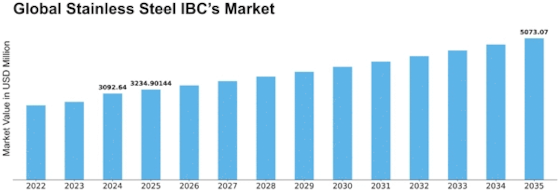

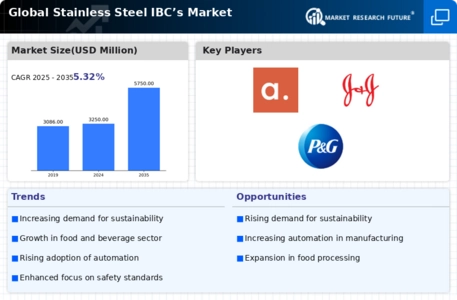

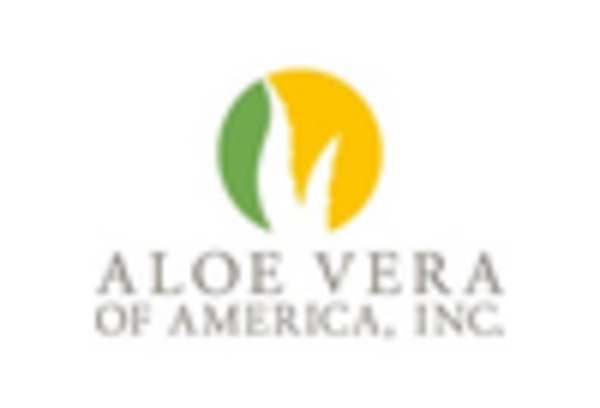
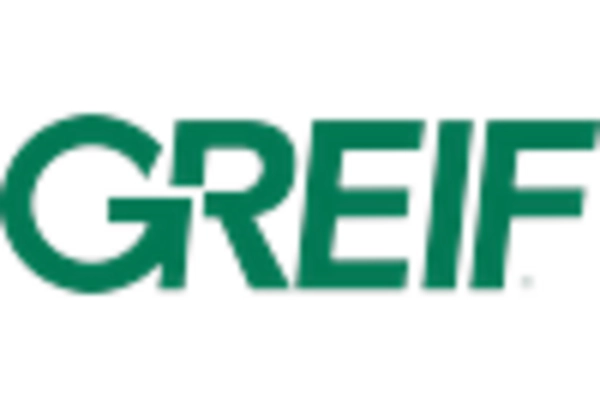

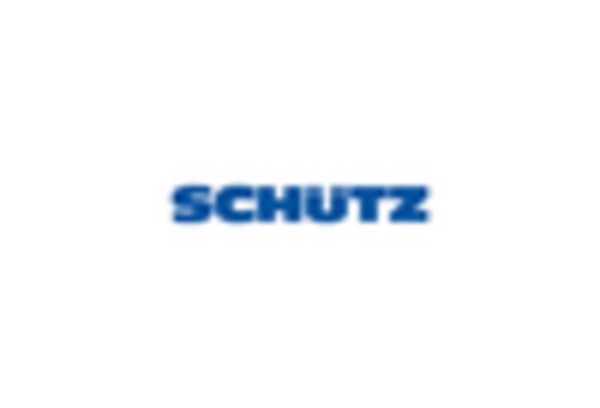
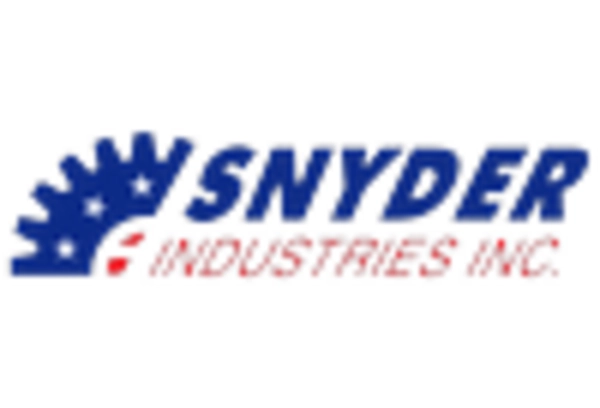
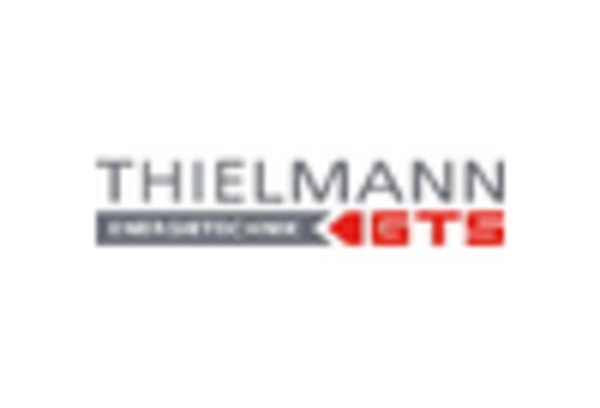

Leave a Comment